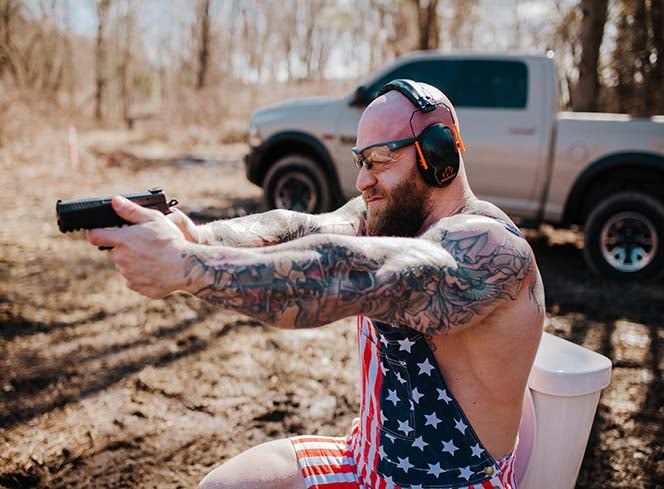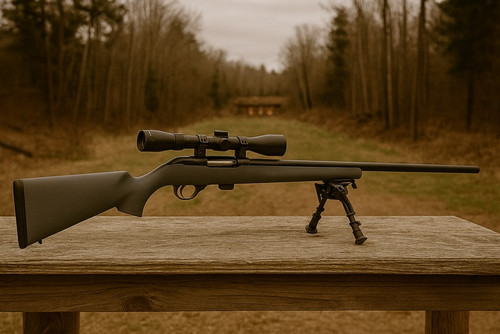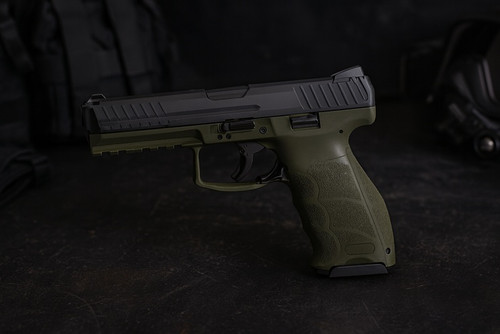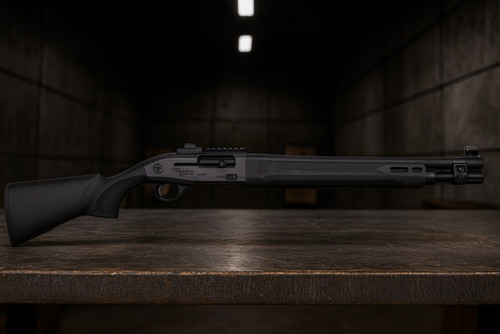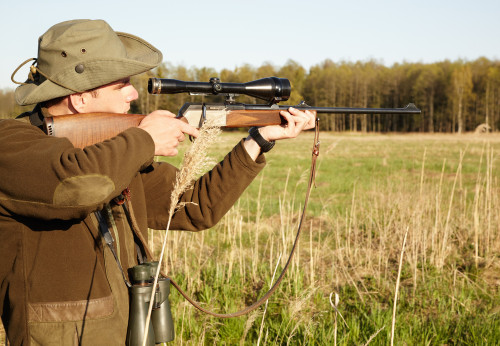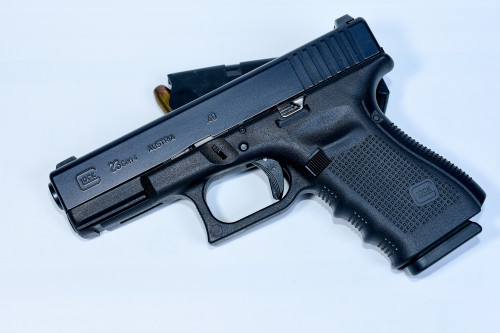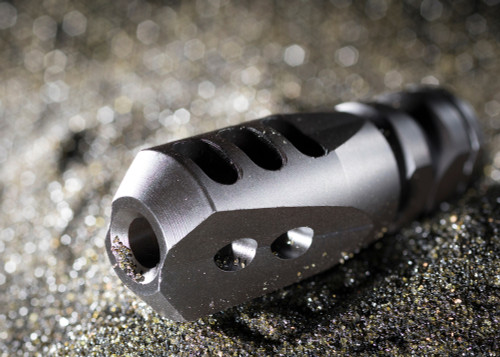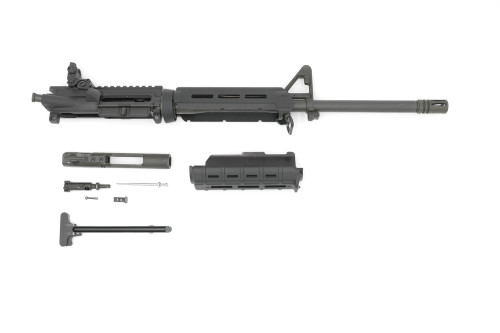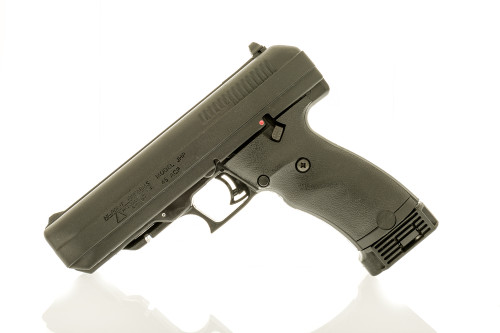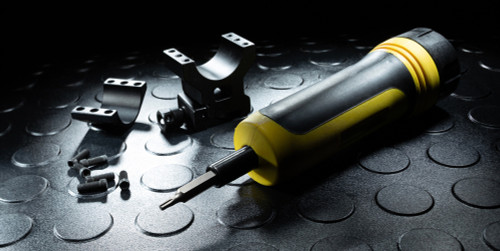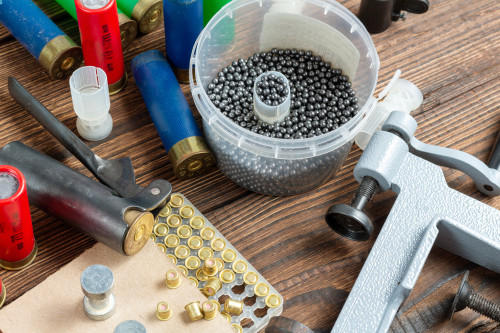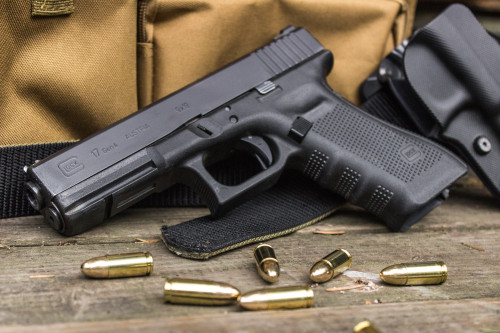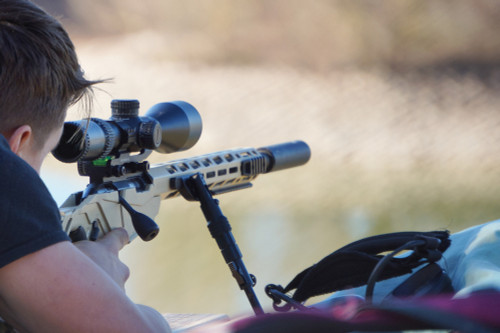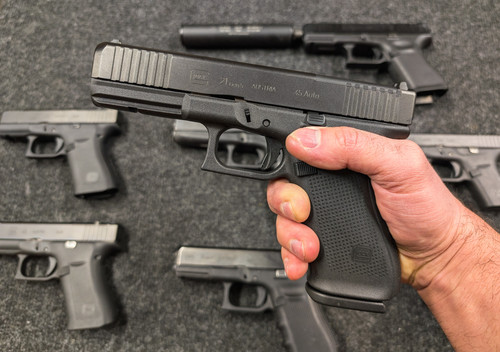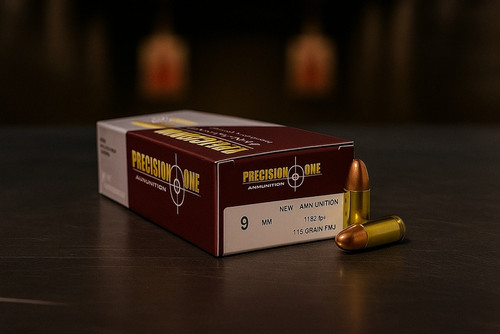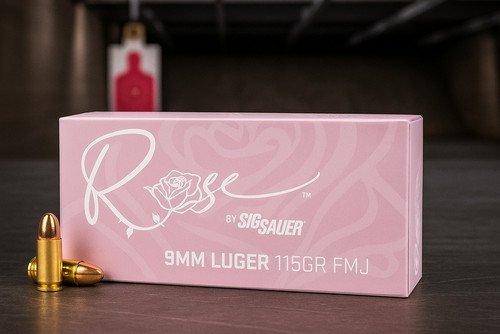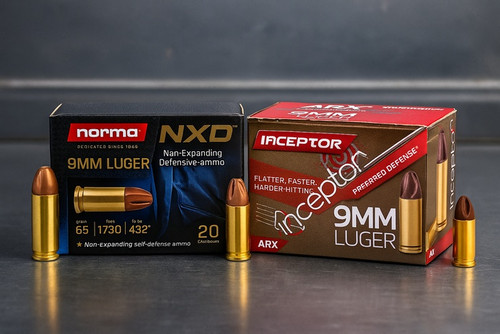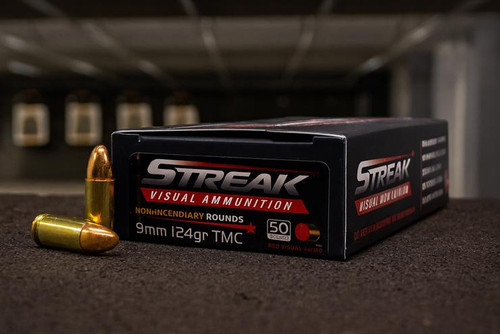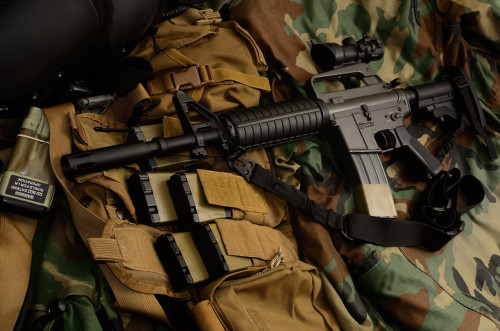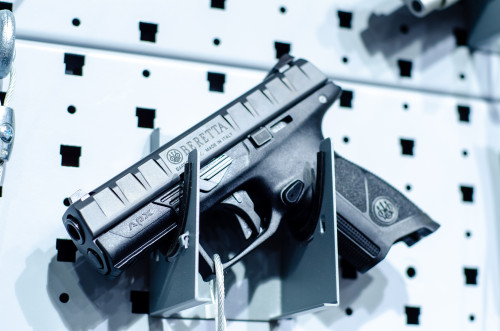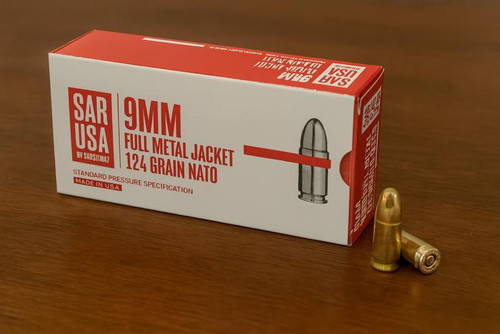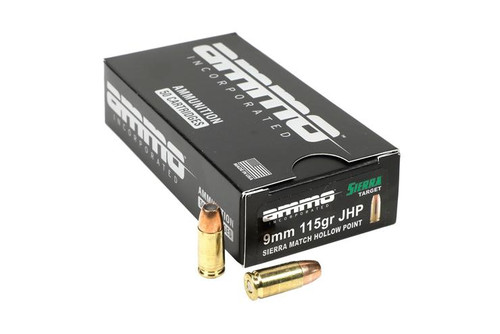Quick Answer
Tipped bullets come in two main styles: painted tips on military or special loads and polymer tips on many hunting and defense rounds. In U.S. military and surplus ammo, tip colors often signal function—green for M855-type penetrator ball, black for armor-piercing, blue for many incendiary loads, and orange or red for tracers—while commercial makers mostly use their own colors for branding. Polymer tips streamline the bullet, help it expand in a controlled way, and make tube-magazine use safer. Under U.S. federal law, a polymer tip by itself does not make a round armor-piercing, though state and local rules can differ.
Key Takeaways
- Green tips (M855) are not classified as armor-piercing under current U.S. federal law.
- Black tips typically mark true armor-piercing rounds in U.S. military color codes, with most modern loads restricted to government use.
- Blue tips often mark incendiary rounds; some hunting loads use blue polymer for branding only.
- Orange and red tips usually mark tracer rounds that light up flight paths in many military systems.
- Polymer tipped bullets improve feeding, flight and expansion without turning into AP ammo.
Why Tipped Bullets Cause So Much Confusion
You might have dug through an old ammo box and seen bullets with odd colored tips. Maybe you saw green-tipped 5.56mm rounds next to bright blue-tipped cartridges. You may have stood at a gun counter and heard a mix of stories about what each color is meant to do.
"Those green tips will go through anything!" one person claims.
"Blue tips will set your target on fire," says another.
"That polymer tip makes it armor-piercing," a third chimes in.
So much information – and misinformation – swirls around tipped bullets that even experienced gun owners get confused. The reality is that those colored tips aren't magical enhancements. They're identification markers or design elements with specific purposes.
Let's cut through the myths and decode what each tip actually does, when it's useful, and when it might be a bad choice for your needs.
What Are Tipped Bullets, Really?
Tipped bullets come in two main varieties:
- Color-coded military/specialty ammunition with painted tips for quick identification
- Polymer-tipped bullets designed for better ballistics and terminal performance
Both serve practical purposes without turning regular ammo into sci-fi super-bullets. Color coding helps shooters identify special-purpose rounds at a glance, especially in military contexts where mixing up tracer and standard ammunition could have serious consequences.
Polymer tips, on the other hand, solve several common ballistic problems. They create more aerodynamic profiles, protect hollow point cavities, and drive controlled expansion on impact.
How Tipped Bullets Work – Aerodynamics, Expansion, Consistency
Better Flight Path
Pointed tips create what ballistics experts call a "spitzer" profile – more aerodynamic than flat-nosed bullets. This shape cuts through the air with less resistance, helping the bullet maintain velocity and resist wind drift.
Controlled Expansion
When a polymer-tipped bullet hits a target, the tip crushes backward and drives into the hollow cavity behind it. This action initiates rapid, controlled expansion. The bullet opens up predictably, transferring energy effectively without over-penetrating.
Consistency in Performance
Traditional hollow points can get plugged with clothing, hair, or other material before they reach their target. This debris can prevent proper expansion. Polymer tips protect that hollow cavity until impact, then help force it open. This gives more reliable performance shot after shot.
Quick Color Guide: Green, Black, Blue, Orange and More
In U.S. military and surplus ammunition, tip colors commonly line up this way, though commercial manufacturers may use colors differently: Here's what those colored tips typically indicate:
| Tip Color | Most Common Meaning | Notes |
|---|---|---|
| Green | M855 / SS109 5.56mm with steel penetrator | Not legally “armor-piercing” by ATF definition |
| Black | True armor-piercing rounds | Mostly military-only except some WWII surplus |
| Blue | Typically incendiary rounds | Some hunting bullets use blue polymer tips (not incendiary) |
| Orange / Red | Tracer ammunition | Leaves a visible light trail when fired |
| Various polymer colors | Brand identification | Colors vary by manufacturer and caliber |
Color Means Function, Not Magic
Just because a round has a colored tip doesn't mean it performs radically differently than standard ammunition. The color is primarily an ID system, not an enhancement in itself. No tip color turns a standard rifle into a tank-buster or flame-thrower.
Green Tip 5.56

Those green-tipped 5.56mm rounds you see at gun shows or in shops started as the SS109 round from Belgium in the 1970s. NATO made it the standard 5.56mm cartridge. The U.S. military later picked it up in the 1980s and renamed it M855.
The distinctive green paint on the tip served a simple purpose: to distinguish it from the earlier M193 rounds. The military needed a quick visual way to tell them apart, and the green tip became the solution.
What makes M855 different from standard ball ammo? It contains a small steel penetrator within its lead core. This design gives it better performance at longer distances and through light barriers compared to the older M193 round.
Are Green Tips Armor-Piercing? What ATF and Law Say
Despite common myths, green tip ammunition is not legally classified as "armor-piercing" under U.S. federal law.
According to the federal definition in 18 USC 921(a)(17), armor-piercing ammunition must either:
- Be made entirely from specific metals like tungsten alloys, steel, brass, etc., or
- Have a jacket weighing more than 25% of the total projectile weight
Under 18 U.S.C. 921(a)(17), U.S. federal law defines “armor-piercing ammunition” mainly as projectiles made entirely from certain hard metals (like some steels, brass, or tungsten alloys), or bullets whose jackets make up more than about one-quarter of the projectile’s total weight.
In 2015, a federal agency proposal suggested removing an exemption that allowed M855 to be sold on the civilian market. The idea met heavy public and industry pushback, in part because M855 is not classified as armor-piercing under the statutory definition. The proposal was ultimately withdrawn, and green tip ammunition remains legal for civilian purchase in many areas, subject to state and local law.
When Green Tip M855 Makes Sense – and When It Doesn't
Green tip ammo works well for:
- Mid-range outdoor training
- Situations where light barrier penetration might help
- Practice that mimics military service loads
But it's a poor choice for:
- Many indoor ranges (which ban it due to backstop damage)
- Home defense (where over-penetration is a serious concern)
- Hunting (where expanding bullets perform better)
Black Tip Ammo

Now we are talking about serious ammo. Black-tipped rounds usually mean true armor-piercing, often called AP. These bullets use hard steel, tungsten, or other very tough metal cores built to bite through armor.
The black tips most civilians are likely to see are old WWII surplus .30-06 AP rounds. These older cartridges use hardened steel cores that can punch through the light armor used in that era.
Modern black tip loads include rounds such as the military M995 with a tungsten carbide core. That round can drive through tough barriers, even the engine block of a truck at 500 yards.
Availability and Legal Boundaries for Civilians
Most modern armor-piercing rifle ammunition is made for military and government buyers. It almost never shows up on the regular commercial market. You may still see older surplus black-tip .30-06 rounds in private collections or on the secondary market, but even those now face growing limits.
Federal law puts clear limits on making and importing some armor-piercing handgun ammunition for civilians. Some states add their own rules and extend them to rifle armor-piercing rounds. Always check up-to-date federal, state, and local law before you buy or use anything sold as armor-piercing.
What AP Rounds Are Designed For
True armor-piercing rounds serve highly specialized military purposes:
- Defeating light armored vehicles
- Penetrating hardened cover positions
- Engaging targets behind barriers
- Disabling engine blocks and other mechanical targets
For the average civilian shooter, these capabilities offer little practical benefit. They're not needed for hunting, not ideal for home defense, and often banned at public shooting ranges.
Blue Tip Ammo

Blue-tipped ammo usually marks incendiary rounds. These bullets are built to start fire or create intense heat when they hit.
Incendiary ammo goes back to World War I. It was made to bring down observation balloons and early planes. By World War II, better incendiary rounds turned into a main tool against enemy aircraft. They light fuel tanks on impact.
Modern military incendiary loads often use chemicals such as phosphorus. These light up when they meet air after the bullet jacket breaks on impact.
Fire Risk and Range Rules
The fire-starting capability of true incendiary rounds presents obvious hazards:
- Extreme fire risk in dry conditions or near flammable materials
- Potential damage to range facilities
- Safety risks to shooters and bystanders
For these reasons, most public shooting ranges strictly prohibit incendiary ammunition. Many states also restrict or ban civilian possession of true incendiary rounds.
Not Every Blue Tip Is Incendiary
Here's where things get confusing: not all blue-tipped bullets are incendiary. Many modern hunting and target loads use colored polymer tips, including blue ones, purely as a branding feature or to indicate caliber.
For example, some companies produce excellent polymer-tipped hunting bullets with blue tips that have absolutely nothing to do with incendiary capabilities. They're simply standard expanding hunting bullets with a colored polymer tip for aerodynamic and terminal performance.
Always read the manufacturer's description and packaging. Don't judge ammunition solely by tip color.
Orange and Red Tips
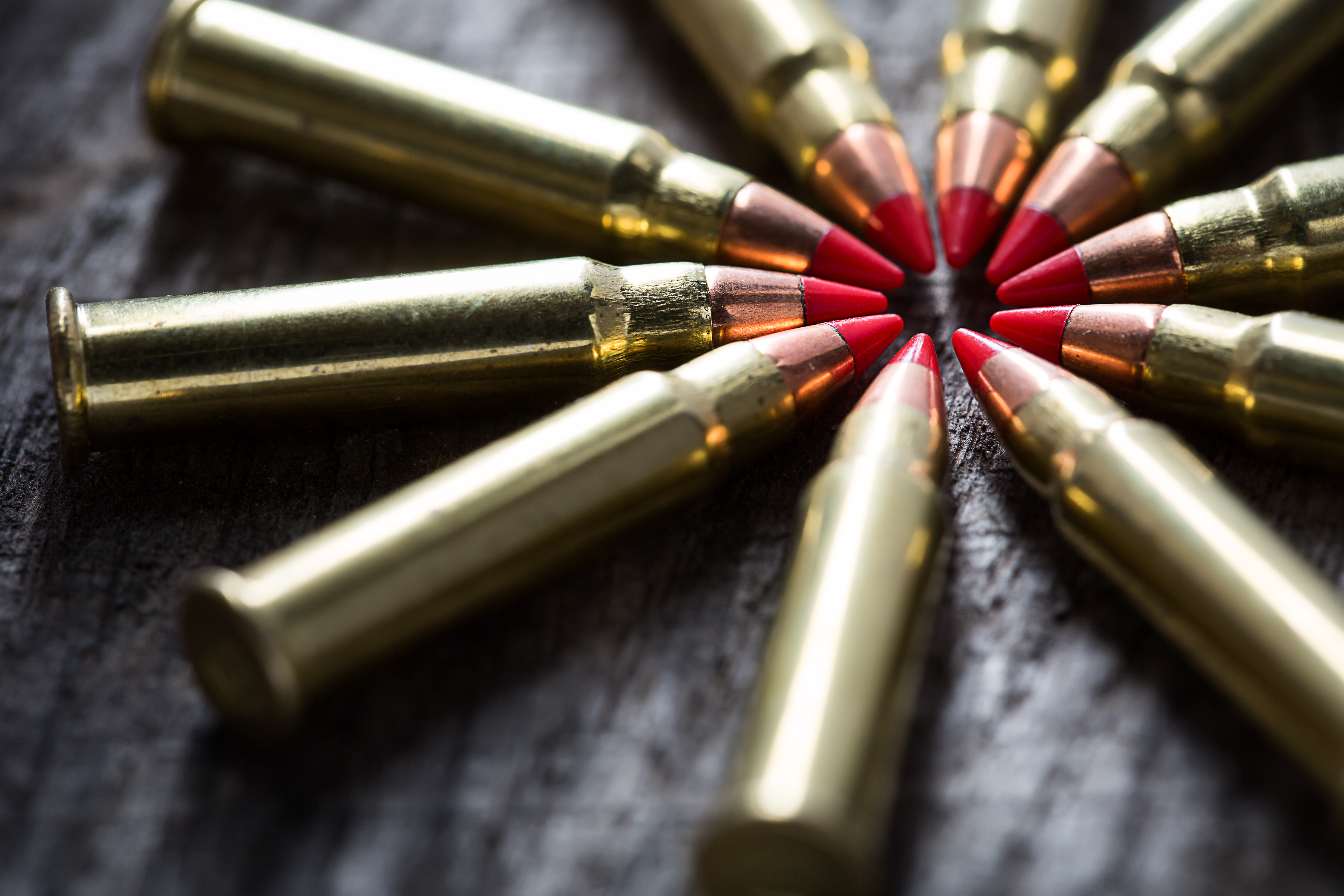
Orange or red tips usually mean tracer rounds. These bullets carry a small burning mix in the base that lights up when fired and leaves a bright trail as the bullet moves downrange.
Tracer ammunition serves several practical purposes:
- Helping shooters see bullet flight paths for aim adjustment
- Marking targets for other shooters in military/tactical situations
- Signaling when a magazine is nearly empty (by loading tracers at the bottom)
The pyrotechnic element in most tracers burns brightly enough to be visible in daylight, though they're most dramatic at night.
Types of Tracer Rounds
Tracer ammunition comes in several varieties:
Bright tracers light up immediately upon leaving the barrel and remain highly visible throughout their flight path. These are the most common types but also reveal the shooter's position most obviously.
Subdued tracers don't ignite until they're about 100 yards from the muzzle. This helps conceal the shooter's position from enemies downrange.
Dim or IR tracers produce minimal visible light but show up clearly through night vision equipment. These specialized military tracers reduce the risk of giving away positions or damaging night vision gear.
Legal Limits on Tracer Use
Tracer rounds face significant legal and practical restrictions:
- Many states and localities restrict or prohibit civilian possession of tracer ammunition.
- Most public shooting ranges ban tracers because of the high fire risk.
- Using tracers in dry conditions can easily start wildfires or damage range facilities.
In some jurisdictions, certain tracer compositions or specialty loads may fall under explosives or hazardous-materials rules. If you are interested in tracer ammunition, you must research current federal, state, and local laws carefully before buying or using it.
Polymer Tipped Bullets
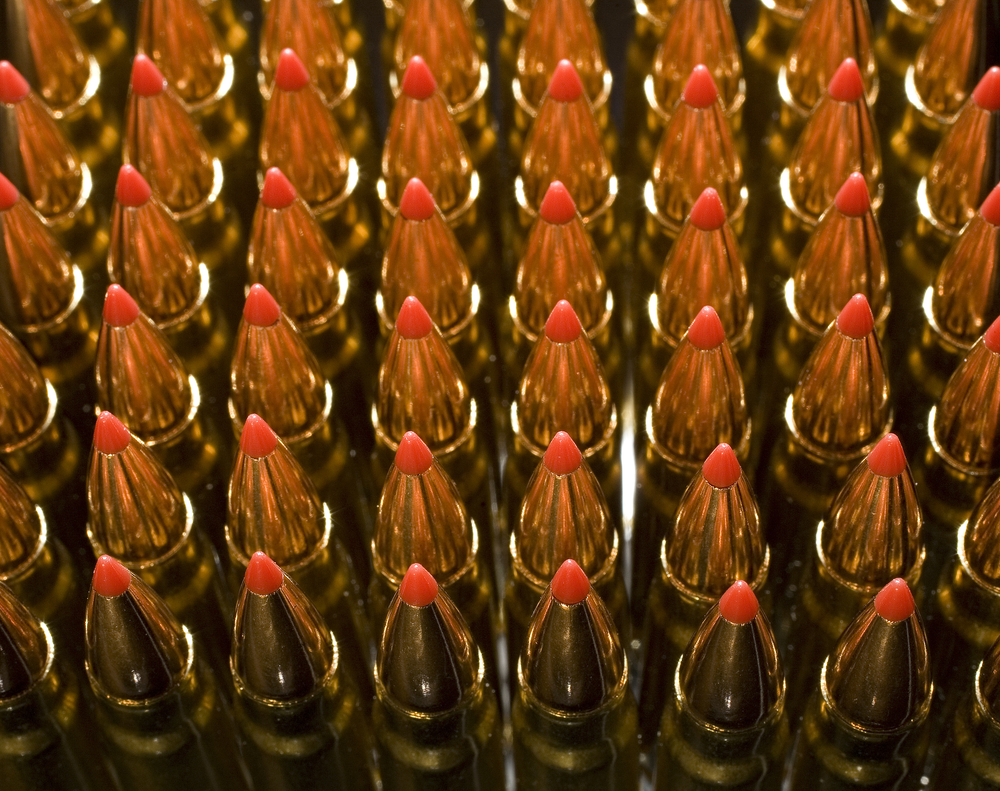
Moving away from military specialty rounds, polymer-tipped bullets represent a major innovation in hunting and defensive ammunition. These bullets feature a hollow point cavity filled with a shaped plastic tip.
Unlike colored military tips that simply identify the round type, polymer tips actively improve bullet performance in several ways. The polymer material creates a sleek, pointed profile during flight but then initiates controlled expansion upon impact.
Many manufacturers produce polymer-tipped bullets, including Nosler's "Ballistic Tip" (a registered trademark), Hornady's various lines, and Sierra's offerings. Each company may use different colors for their polymer tips – sometimes to indicate caliber, sometimes just for brand identity.
Aerodynamics and Trajectory
Polymer tips significantly improve ballistic performance compared to traditional bullet designs:
- Better aerodynamics than flat-nosed hollow points
- Higher ballistic coefficients than round-nose bullets
- Less wind drift at long range
- Flatter trajectories for easier long-distance shooting
This improved flight path makes polymer-tipped bullets popular for hunting, where accurate shot placement at varying distances is crucial.
Expansion and Penetration Control
Upon impact, polymer tips deliver consistent terminal performance:
- The tip drives backward into the hollow cavity
- This initiates rapid, controlled expansion
- The bullet creates a larger wound channel than non-expanding bullets
- Expansion can be tailored to the intended purpose (hunting vs. defense)
This balance of penetration and expansion makes polymer-tipped bullets effective for both hunting and some defensive applications.
Feeding and Reliability in Handguns and Rifles
Many semi-automatic pistols have trouble with hollow point ammo. The wide flat nose on classic hollow points can hit the feed ramp and cause a jam at a very bad time.
Polymer tips help fix that. They give the bullet a smooth rounded front that feeds in a much cleaner way. The bullet still opens up like a hollow point, but it runs through the gun more like a round-nose ball round.
This makes polymer-tipped bullets strong picks for defensive pistols that are picky about feeding.
Tube-Fed Magazine Safety in Lever Guns
Lever-action rifles typically use tubular magazines where cartridges stack in a line, with the bullet tip of one round resting against the primer of the next.
This creates a safety issue with pointed metal bullets – recoil could potentially drive the sharp point of one bullet into the primer ahead of it. It can cause a catastrophic chain reaction of unintended discharges inside the magazine tube.
That's why traditional lever gun ammunition used round-nosed bullets, which sacrifice aerodynamic performance for safety.
Polymer tips brilliantly solve this problem. They provide the aerodynamic benefits of a pointed bullet but with a soft tip that won't set off primers during recoil. This lets lever gun shooters enjoy better ballistic performance without safety concerns.
How to Match Tipped Bullets to Real-World Roles
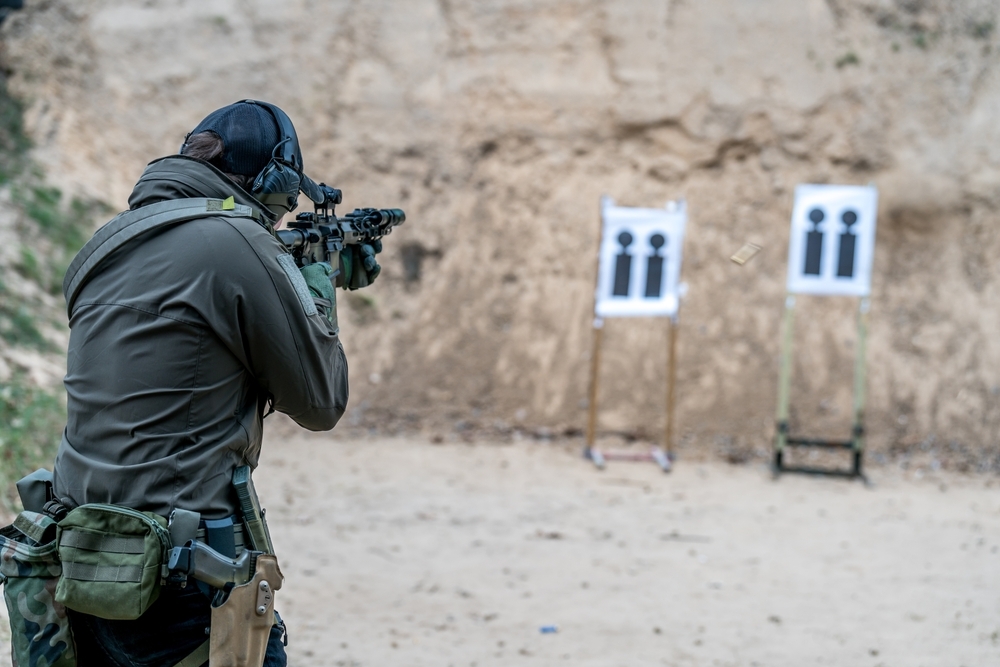
With all these options, how do you choose the right ammunition for your needs?
Range Practice and Training
For regular range practice and training:
- Standard ball ammunition works perfectly for most purposes
- Save specialty rounds for specific training scenarios
- Avoid green tips at ranges that prohibit them
- Never use tracers or incendiary rounds without explicit range permission
A small amount of polymer-tipped hunting ammunition might be worth testing if you want to compare trajectories to your standard practice ammo.
Hunting
For hunting applications:
- Polymer-tipped bullets excel for most game animals
- Their controlled expansion creates clean, ethical kills
- Better long-range accuracy helps with distant shots
- Choose weight and construction appropriate to your target species
Traditional soft points still work well for many hunting situations, especially at closer ranges where their terminal performance remains excellent.
Home and Personal Defense
For defensive situations:
- Polymer-tipped handgun ammunition can offer reliable feeding with good terminal performance
- Focus on ammunition that balances adequate penetration with controlled expansion
- Consider over-penetration risks in your living situation
- Test any defensive ammunition thoroughly in your specific firearm
Remember that bullet design is just one factor in defensive ammunition selection. Reliability in your particular gun matters more than any theoretical performance benefit.
What to Avoid for Most Civilian Roles
Several specialized ammo types rarely make sense for most civilian use:
- True armor-piercing rounds with black tips give little real gain and come with heavy legal limits
- Tracer and incendiary ammo can start fires and often run into legal limits
- Many military-only loads do not behave the same way in common civilian guns
When you are not sure, stay with standard ammo from well-known makers that build loads for your clear use, such as training, hunting, or home defense.
Laws, Range Rules, and Safety with Tipped Bullets

Before purchasing or using any specialty ammunition:
- Research current federal, state, and local laws
- Check your range's specific rules (many ban green tip, tracer, and other specialty rounds)
- Consider the appropriate application for each ammunition type
Safety concerns to remember:
- Penetrator rounds may damage range backstops or create ricochet hazards
- Tracers and incendiary rounds present serious fire dangers
- Any ammunition should only be used with appropriate backstops
Be a responsible gun owner – know what you're shooting and where it's appropriate to use it.
Conclusion
Colored tips and polymer points are not just for show. Each one does a real job in ammo. Green tips mark military penetrator rounds. Black marks true armor-piercing loads. Blue often means the round can start fire, and orange or red usually marks tracers that draw glowing lines in the air. Polymer-tipped bullets help hunters and people who carry for defense fix real problems with feeding and expansion.
The next time you see a tipped bullet, you’ll have a better sense of its likely role and its limits. No tip color turns plain ammo into a magic round. Each design has clear strengths, clear trade-offs, and specific use cases.
Tip colors can tell you a lot about a round’s intended use — but once you know what each color means, the next step is choosing the right load for regular practice. If you’re looking for dependable, range-friendly options, check out our Best 5.56 Range Ammo guide for top picks.

Magtech 5.56 NATO 62gr FMJ
$26.54
at Pro Armory
Prices accurate at time of writing
Frequently Asked Questions (FAQs)
Are green tip 5.56 bullets actually armor-piercing?
No. Despite popular myths, green tip M855 ammunition does not meet the current federal legal definition of armor-piercing ammunition. It contains mostly lead and does not have the jacket-to-projectile weight ratio that would classify it as AP under that statute.
Is it legal to own black tip armor-piercing ammo?
It depends on the specific ammunition and your location. Some older surplus black tip .30-06 may be legal in certain states, but most modern AP ammunition is restricted to military use. Always check current federal, state, and local laws.
Do blue tipped bullets always mean incendiary rounds?
No. Traditional military blue tips often indicate incendiary rounds, but many modern hunting bullets use blue polymer tips that have nothing to do with incendiary capabilities. Always check the manufacturer's description.
Can I shoot green tip or other tipped bullets at an indoor range?
Most indoor ranges prohibit green tip ammunition because the steel penetrator can damage backstops. Always check your range's specific rules before bringing any specialty ammunition.
Are polymer tipped hunting bullets safe for home defense?
Some polymer-tipped defensive ammunition is designed specifically for this purpose. It balances penetration and expansion. Research loads designed for defense rather than using hunting ammunition.
Do tracer rounds start fires in normal use?
Yes, they absolutely can. The pyrotechnic compound in tracers burns very hot and can easily ignite dry vegetation, range materials, or other flammable objects. This is why they're banned at most civilian ranges.
Does bullet tip color always match the same function across brands?
No. Military ammunition follows certain conventions, but commercial manufacturers use colors differently. Polymer tip colors vary widely between brands and may indicate caliber, product line, or just brand identity.
About the Author
This article was written by the Pro Armory writing team based on current research, including studies from reputable sources like the Journal of Military Science, Firearms News, and the National Shooting Sports Foundation. We also referenced trusted information from official defense publications and respected firearm authorities such as the ATF, NRA, and manufacturer manuals.
Disclaimer: This article is for education only. Laws vary by state and city and can change at any time. Follow safe handling at all times. Read your owner’s manual. Verify local rules before you buy, possess, or train with any ammunition, especially specialty or restricted types.



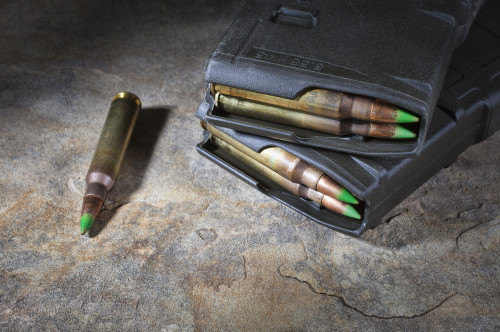
 Pro Armory Editorial Team
Pro Armory Editorial Team